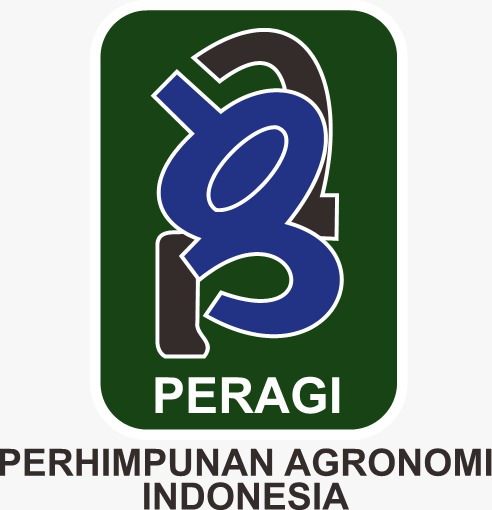Growth and Yield of Intercropping between Carica (Carica pubescens) and Sweet Potato (Ipomoea batatas L.) and Leeks (Allium fistulosum L.)
Abstract
Carica pubescens needs a climate and edapic environment similar to that of its native Dieng plains in order to thrive. Due to these circumstances, measures must be taken to facilitate its diffusion. Another option is transplanting to regions with nearly identical edaphic and climatic characteristics. The growth of C. pubescens planted in monoculture and intercropping, as well as the degree of crop competition in intercropping and the effectiveness of the land used, the slopes of Mount Lawu are advised for transplant. The study's planting treatments were as follows: (1) C. pubescens monoculture; (2) Sweet Potato Monoculture; (3) C. pubescens and Sweet Potato Combination; (4) Leek Monoculture; and (5) C. pubescens and Scallions Combination. The study was set up in a randomized block design (RBD) with five replications. The ANOVA analysis of the growth characteristics, which comprised planting height, leaf area, and the number of leaves, was then proceeded using Duncan's test at the 5% level. Utilize the competition ratio (CR) formula to determine plant competition and the land equivalent ratio (LER) formula to determine productivity. The number of leaves parameter in the C. pubescens and sweet potato combination indicated a significant difference in the results. When grown alongside sweet potatoes, C. pubescens tends to be less competitive, with plant height values of 0.86: 1.27, 0.83: 1.72 for leaves, and 0.94: 1.10 for leaf area. The intercropping system is more lucrative with a value of plant height: 1.84, number of leaves: 1.89, and leaf area: 1.99 compared to plant height: 2, number of leaves: 2, and leaf area: 2, 25.
Downloads
References
Aminah, I.S., Budianta, D., Perto, Y., Sodikin, E., 2014. Tumpangsari Jagung (Zea mays L.) Dan Kedelai (Glycine max L. Merrill) Untuk Efisiensi Penggunaan Dan Peningkatan Produksi Lahan Pasang Surut 38.
Ceunfin, S., Prajitno, D., Suryanto, P., Putra, E.T.S., 2017. Penilaian Kompetisi Dan Keuntungan Hasil Tumpangsari Jagung Kedelai Di Bawah Tegakan Kayu Putih. Sc 2, 1–3. Https://Doi.Org/10.32938/Sc.V2i01.76
Dini, A.Z.D., Yuwariah, Y., Wicaksono, F.Y., Ruswandi, D., 2018. Pertumbuhan Dan Hasil Tanaman Jagung (Zea mays L.) Pada Pola Tanam Tumpangsari Denganubi Jalar (Ipomoea Batatas L.) Lam) Di Arjasari Kabupaten Bandung. Jai 3. Https://Doi.Org/10.33661/Jai.V3i2.1375
Laily, A.N., Alfiah, I., Khoiri, A.N., 2018. Karakterisasi Carica Pubescens Lenne & K. Koch Di Jawa Timur.
Laily, A.N., Suranto, Sugiyarto, 2012. Karakterisasi Carica Pubescens Di Dataran Tinggi Dieng, Jawa Tengah Berdasarkan Sifat Morfologi, Kapasitas Antioksidan, Dan Pola Pita Protein. Nusantara Bioscience 16–21.
Lestari, D., Turmudi, E., Suryati, D., 2019. Efisiensi Pemanfaatan Lahan Pada Sistem Tumpangsari Dengan Berbagai Jarak Tanam Jagung Dan Varietas Kacang Hijau. Jipi 21, 82–90. Https://Doi.Org/10.31186/Jipi.21.2.82-90
Pangaribuan, M.R., Meriani, M., Srifitriani, A., 2021. Tumpang Sari Antara Jagung Dan Cabai Rawit Sebagai Olahan Tani Di Kabawetan. J. Abdihaz 3, 72. Https://Doi.Org/10.32663/Abdihaz.V3i2.2554
Paulus, J.M., 2016. Produktivitas Lahan, Kompetisi, Dan Toleransi Daritiga Klon Ubijalar Pada Sistem Tumpang Sari Dengan Jagung. Eug 11. Https://Doi.Org/10.35791/Eug.11.1.2005.11881
Rastono, A., Sugiyarto, Marsusi, 2018. Pertumbuhan Dan Produktifitas Lahan Carica (Carica pubescens) Dalam Pola Tanam Tumpangsari Dengan Stroberi (Fragaria vesca) Dan Loncang (Allium fistulosum L.) Di Lereng Gunung Lawu. Jurnal Binawakya 12, 445–440.
Rochmah, H.F., Muliasari, A.A., 2020. Optimasi Lahan Replanting Kelapa Sawit Dengan Sistem Tumpangsari Jagung (Zea mays L) Dan Kacang Tanah (Arachis hypogaea).
Setyowati, M.L., Sulistyaningsih, E., Putra, T.S.E., 2013. Pertumbuhan Dan Hasil Kubis (Brassica oleraceae L.) Dalam Sistem Tumpangsari Dengan Bawang Daun (Allium fistulosum L.). Vegetalika 2, 32–44. Https://Doi.Org/10.22146/Veg.3996
Silaen, S., 2021. Pengaruh Transpirasi Tumbuhan Dan Komponen Didalamnya. J. Agroprimatech 5, 14–20. Https://Doi.Org/10.34012/Agroprimatech.V5i1.2081
Statistik Pertanian Hortikultura Kabupaten Karanganyar 2019-2021.Pdf, N.D.
Supriatna, J., Syihab, F.N., Sativa, N., Yuwariah, Y., Ruswandi, D., 2022. Seleksi Jagung Hibrida Unpad Berdasarkan Komponen Hasil Dan Parameter Tumpangsari Pada Sistem Tanam Tumpang Sari Jagung-Ubi Jalar. J. Agro 9, 1–11. Https://Doi.Org/10.15575/14955
Tika, Y.Y., Sudarti, S., 2021. Pengaruh Intensitas Cahaya Terhadap Pertumbuhan Tanaman Kunyit. Jupiter J. Penel. Fis. Terapan 2, 52. Https://Doi.Org/10.31851/Jupiter.V2i2.5730
Toibba, H., Wangiyana, W., Zubaidi, A., 2023. Upaya Untuk Meningkatkan Pertumbuhan Dan Kadar Brix Berbagai Varietas Sorgum (Sorghum bicolor L.) Melalui Tumpangsari Sisipan Dengan Kacang Tanah. Jurnal Agrotek Ummat 10, 127–139.
Warman, G.R., Kristiana, R., 2018. Mengkaji Sistem Tanam Tumpangsari Tanaman Semusim.
Wibowo, A., Purwanti, S., Rabaniyah, R., N.D. Merr) Mallika Yang Ditanam Secara Tumpangsari Dengan Jagung Manis (Zea Mays Kelompok Saccharata).
Copyright (c) 2023 Adi Rastono, Sugiyarto Sugiyarto, Marsusi Marsusi

This work is licensed under a Creative Commons Attribution 4.0 International License.
Authors who publish with Jurnal Agronomi Tanaman Tropika (JUATIKA) agree to the following terms:
Authors retain copyright and grant the Jurnal Agronomi Tanaman Tropika (JUATIKA) right of first publication with the work simultaneously licensed under a Creative Commons Attribution License (CC BY 4.0) that allows others to share (copy and redistribute the material in any medium or format) and adapt (remix, transform, and build upon the material for any purpose, even commercially) with an acknowledgment of the work's authorship and initial publication in Jurnal Agronomi Tanaman Tropika (JUATIKA).
Authors are able to enter into separate, additional contractual arrangements for the non-exclusive distribution of the journal's published version of the work (e.g., post it to an institutional repository or publish it in a book), with an acknowledgment of its initial publication in Jurnal Agronomi Tanaman Tropika (JUATIKA). Authors are permitted and encouraged to post their work online (e.g., in institutional repositories or on their website) prior to and during the submission process, as it can lead to productive exchanges, as well as earlier and greater citation of published work.







 More Information
More Information



